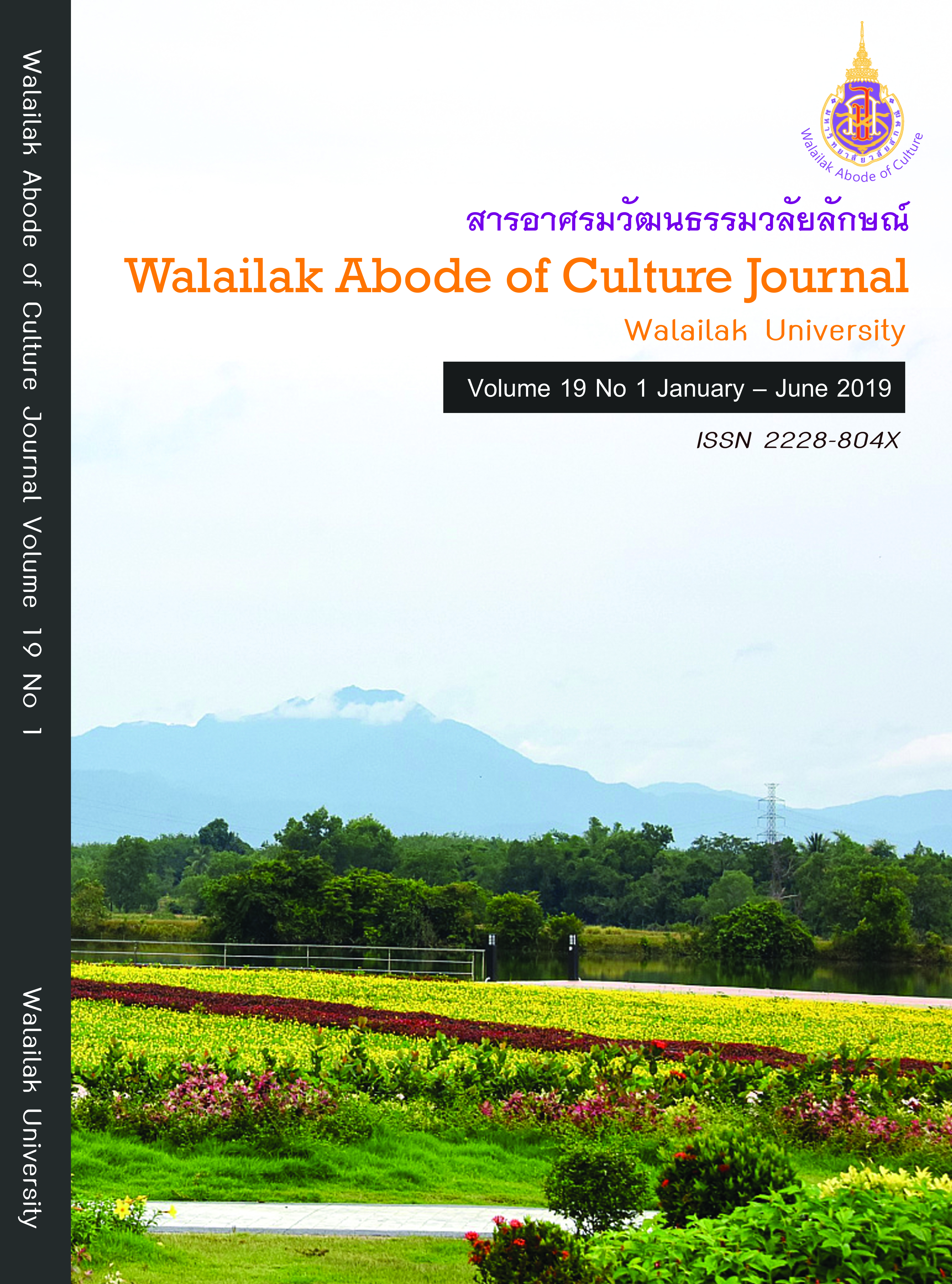Borrowed khmer derivatives appearing in thai textbooks literary appreciation series matthayomsuksa
Main Article Content
Abstract
This article is intended for educational purposes by investigating the use of words derived from Khmer language in 27 pieces of literary work in the Thai textbook series for literaryappreciation in Matthayomsuksa level (High School) approved in B.E. 2551 by the Ministry of Education as the foundation core curriculum. The words were checked for their meanings according to 1) the Khmer-Thai dictionary number 1-5 compiled by Praya Anumarnrartchaton, 2) Traces of Khmer Language in Thai Language Book by Uraisri Varasarin, 3) Dictionary of Borrowed Words from Khmer language in Thai language and 4) Khmer Use - Thai Borrow Book of Santi Pakdeekam, and 5) The Dictionary of Royal Academy, B.E. 2554. The data were reported in descriptive form. The study indicates two issues in adoption of words derived from Khmer in the literary work series of Matthayomsuksa 2. The use of derived Khmer language served firstly the rhyming schemes and sounds, and secondly the poetic and word play in prosody. The demonstration of borrowed words and derived Khmer language used in Thai language reflects the wisdom and poetic ability of the poets to employ a large number of derived Khmer words and borrowed words to create melodious and interesting literature.
Article Details
© 2018 by Asian Journal of Arts and Culture, Walailak University. All rights reserved.
References
Education Commission. (2014). Literacy matthayomsuksa level 6. Bangkok, Thailand: Lat Phrao Office of the Welfare Promotion Commission for Teachers and Educational Personal Printing Factory
Kodkanok, J. (1999). Chue satarnti pasa khmer nai pak tawanoogchiangnui. [Name of the place of Khmer language in the northeast]. Bangkok, Thailand: Sillapakorn University.
Office of the Basic Education Commission. (2014). Literacy matthayomsuksa level 3. Bangkok, Thailand: Lat Phrao Office of the Welfare Promotion Commission for Teachers and Educational Personal Printing Factory.
Office of the Basic Education Commission. (2014). Literacy matthayomsuksa level 4. Bangkok, Thailand: Lat Phrao Office of the Welfare Promotion Commission for Teachers and Educational Personal Printing Factory
Office of the Basic Education Sangponsit, V. (1981). Pa sa tang pra ted nai pasa thai. [Foreign language in Thai language]. Bangkok, Thailand: Odian Store.
Tongkamwan, C. (1971). Lak pasa khmer. [Khmer language principles]. Bangkok, Thailand: Soon Karn Ta Han rap.
Warasarin, U. (2010). Rongroi pasa khmer nai pasa thai. [Trace the Khmer language in Thai language]. Nakhon, Thailand: Sillapakorn University.


